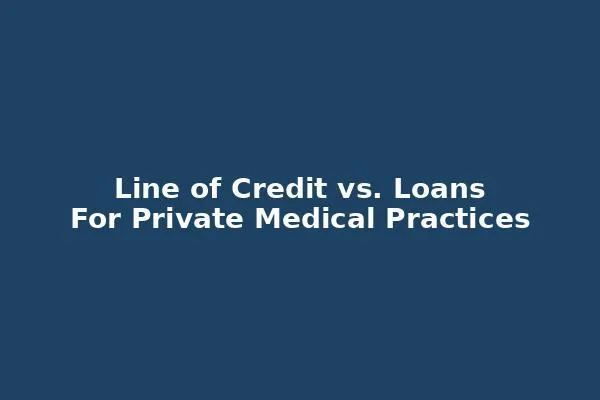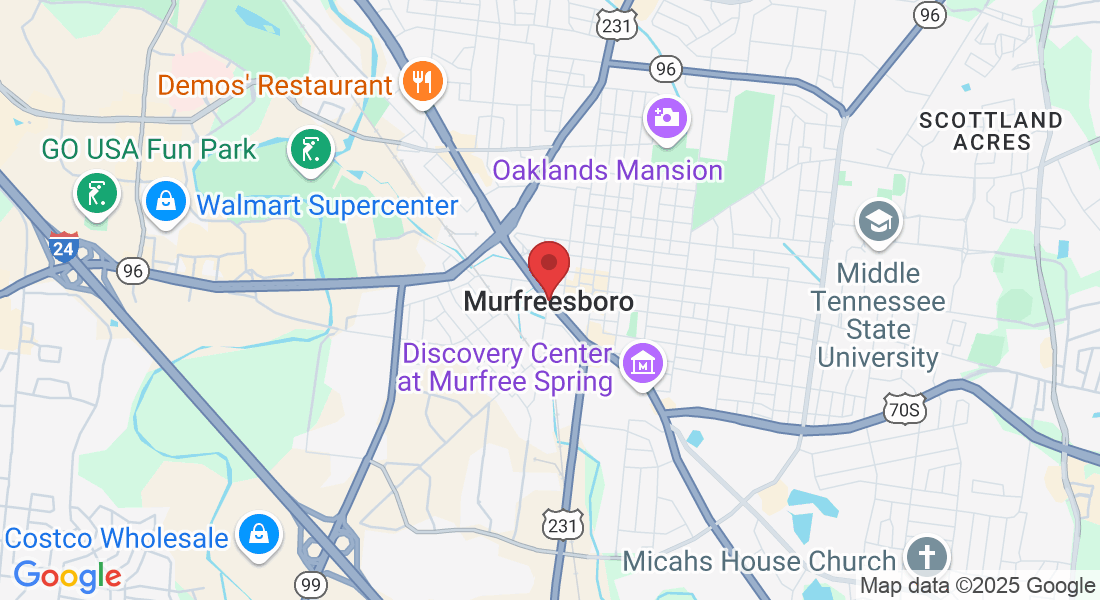Resources
Practical Tools, Insights, and Strategies to Grow a Self-Running Practice
This is your hub for actionable tips, leadership strategies, and systems-focused insights that help you build a chiropractic business that thrives with or without you.
Whether you're looking for guidance on team building, leadership, systems, automation, or practice growth — you’ll find resources here to support every step of your journey.

Line of Credit vs. Loans: What Every Private Practice Should Know
Line of Credit vs. Loans in a Private Medical Practice: Why It Matters and How to Use It Responsibly

In the world of private medical practice, maintaining healthy cash flow isn't just a goal—it’s a lifeline. Whether you're managing payroll, investing in new equipment, or bridging seasonal lulls, access to capital is critical. One of the most flexible financial tools available to practice owners is a line of credit—but it’s also one of the most misunderstood.
What Is a Line of Credit?
A business line of credit is a revolving credit account that gives you access to a set amount of money, which you can draw from as needed. Unlike a term loan (which provides a lump sum and fixed repayment schedule), a line of credit allows you to borrow, repay, and borrow again—similar to a credit card, but often with better interest rates and higher limits.
Line of Credit vs. Traditional Loans

Use case example:
Let’s say your practice faces a temporary revenue dip in Q1 due to fewer patient visits. Instead of applying for a loan each time you need $10K for payroll or vendor payments, a line of credit allows you to draw only what you need and repay when cash flow normalizes—without reapplying each time.
The Importance of Using a Line of Credit Responsibly
While a line of credit can be a lifesaver, it's also easy to misuse. Here’s the difference between responsible and irresponsible use:
✅ Responsible Use
Covering short-term cash flow gaps
Investing in growth (e.g., marketing campaigns, training, seasonal hiring)
Preparing for emergencies (equipment failure, sudden repairs)
Paying vendors while waiting on insurance reimbursements
🚫 Irresponsible Use
Funding long-term debt (e.g., purchasing a building)
Covering chronic cash flow problems without solving root issues
Making large, speculative investments without a clear ROI
Ignoring minimum payments or maxing out the credit line
Tip: Treat your line of credit like a safety net—not a piggy bank. Use it when needed, then prioritize paying it off quickly.
The Consequences of Mismanaging a Line of Credit
Misusing a line of credit can have serious consequences:
Interest snowball: Revolving debt can quickly accumulate interest if not paid down consistently.
Lower credit score: High utilization rates may negatively affect your business credit profile.
Lost trust: Defaulting or mismanaging your LOC could jeopardize your relationship with local banks—making future financing harder to secure.
How to Get a Line of Credit from a Local Bank
Securing a line of credit from a local bank is often easier than most practice owners think—especially when you maintain strong financials and a clear business case. Here’s how to start:
Build a Relationship
Don’t wait until you need money. Visit your local bank, introduce yourself, and discuss your practice’s growth. A solid relationship with your banker can make all the difference.Organize Your Financials
Be prepared to show:2+ years of tax returns
Profit and loss statements
Balance sheets
Cash flow projections
Personal credit history (especially for smaller practices)
Apply with a Purpose
Banks appreciate borrowers who know why they’re requesting a line of credit and how they plan to use it. Explain your plan clearly and conservatively.Start Small if Needed
If this is your first line of credit, start with a modest amount ($25K–$50K). Prove your repayment reliability, and the bank may increase your limit in time.
Final Thoughts
In private medical practice, agility is key. A line of credit gives you breathing room when cash flow is tight—but only when used strategically. Use it to stabilize your operations, not to cover up poor financial habits. By building relationships with local banks and managing your credit wisely, you'll ensure your practice has the financial flexibility it needs to thrive in any season.
Who We Work Best With
✅ Chiropractic practice owners who want a business, not just a busy job
✅ Owners who are committed to leadership, structure, and accountability
✅ Doctors who are tired of “hope and hustle” strategies and want real systems
✅ Visionaries ready to reclaim their time, profitability, and impact
Ready to Build a Business That Runs Without You?
Let’s create your Ripple Effect — one that transforms your practice, your life, and your community.
Unleash Your Business Brilliance.
You have to be the change you want.
© 2025 Ripple Consulting & Development - All Rights Reserved

info.rippleconsulting@gmail.com
272 Heritage Park Drive
